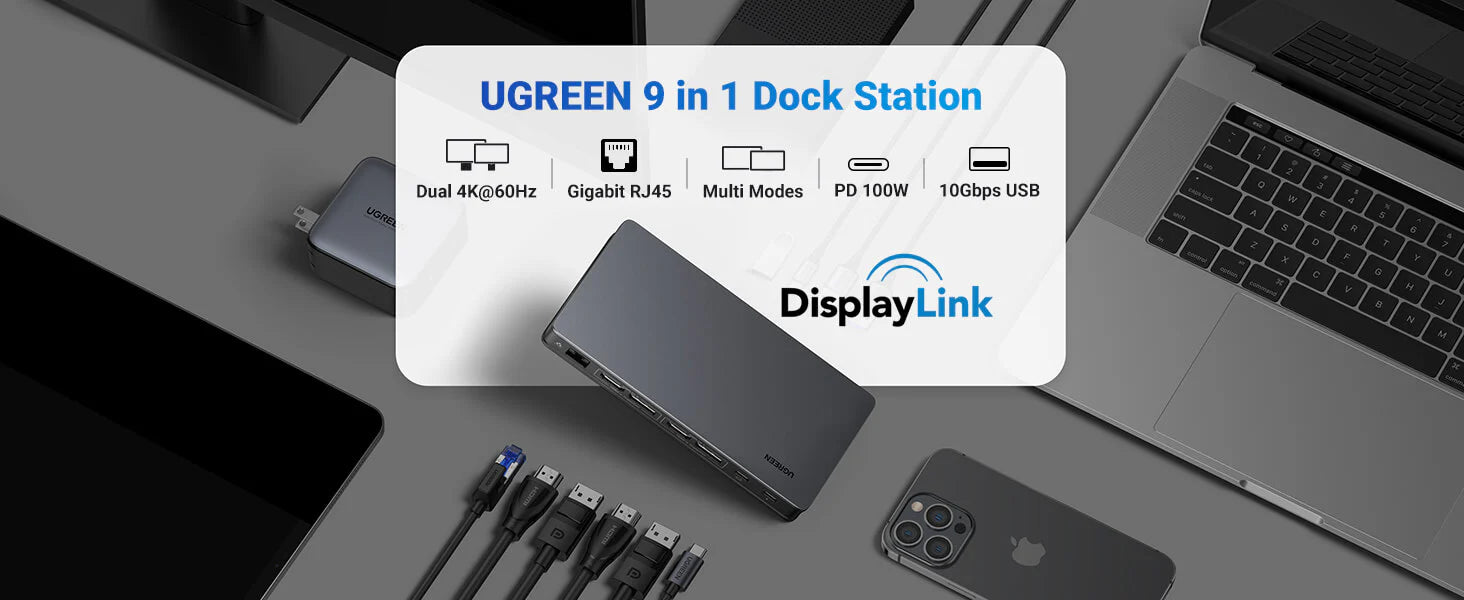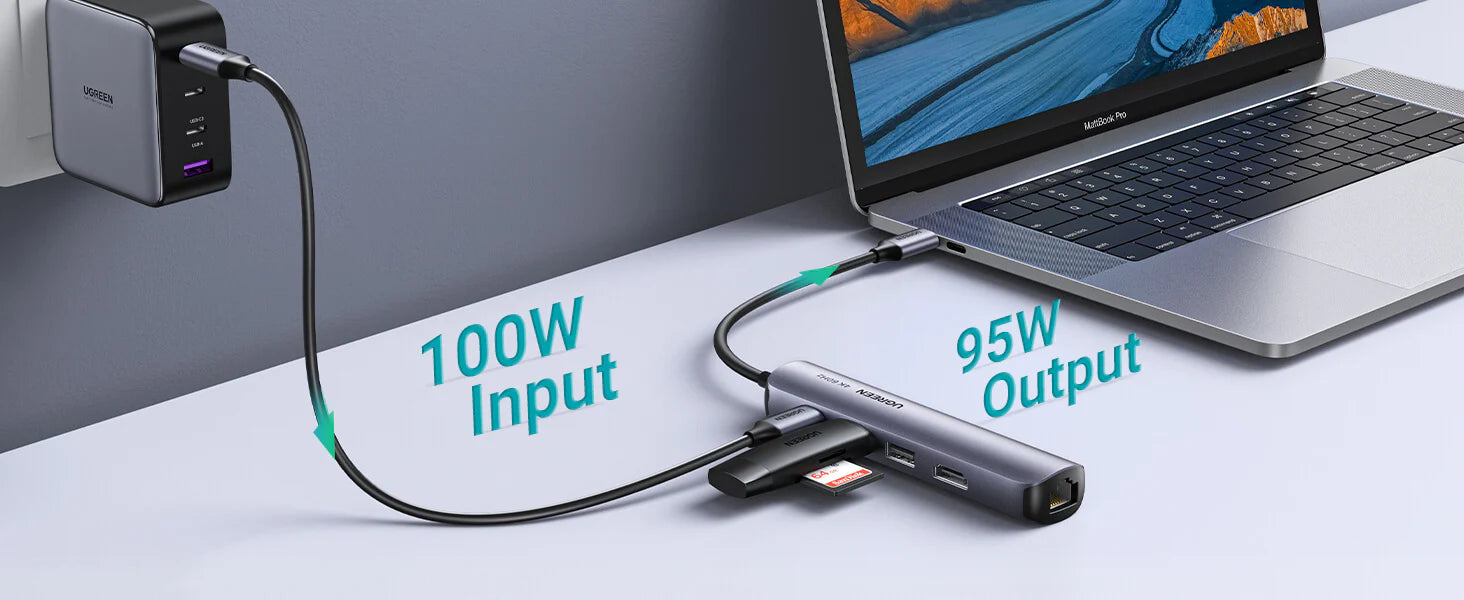
Is DisplayPort Better Than HDMI? A Comprehensive Comparison
|
|
Time to read 6 min
|
|
Time to read 6 min
The two standards in the quick world of digital connectivity for delivering high-definition video are DisplayPort and HDMI. With the technology going up and up, the debate of whether DisplayPort is better than HDMI still lingers in the minds of technical enthusiasts to the professionals in the field. In this comprehensive article, we delve into the nitty-gritty details of both standards, their goods and the bads, and fitness for different applications, so you can have a clear understanding and make the right decision.
At a very basic level, the primary difference between DisplayPort and HDMI lies in what the original specifications were designed to be used for. HDMI, or High-Definition Multimedia Interface, was developed basically as a consumer-electronics connection; it is the de facto standard for transmitting high-definition video and multi-channel audio from devices, like Blu-ray players, game consoles, and set-top boxes, to display devices, like televisions and computer monitors. In fact, it has become somewhat of a household name because of its large acceptance and seamless integration within home entertainment systems.
Meanwhile, DisplayPort is a standard developed by the Video Electronics Standards Association (VESA) with computer displays in mind and the effective transmission of high resolutions in video. It was designed to cater to an ever-increasing demand for professional and commercial applications, such as graphic design, video editing, and high-end gaming.
While sharing a common target of transmission of digital audio and video signals, the architecture and feature set on which each is built differ greatly and shape the strengths and weaknesses of each.
In terms of bandwidth and resolution handling, DisplayPort generally outclasses HDMI. In the most recent standard of 2.0, DisplayPort will take you to resolutions all the way up to 16K (15360 x 8460 pixels) at 60Hz, with up to 77.4Gbps maximum bandwidth. Those kinds of numbers that are within bandwidth and resolution support are truly ideal for the very top-most tier of professional applications that will call for nothing short of the most intense quality and detail.
By contrast, the current HDMI 2.1 specification supports up to 10K resolutions, 10240 x 4320 pixels, at 120Hz over a maximum bandwidth of 48Gbps. That's nothing to sneeze at, but it pales significantly compared to what DisplayPort offers in scenarios where the highest resolutions and refresh rates really have to be attained, such as in top-of-the-line gaming, video production, and scientific visualization.
It should be mentioned, however, that both standards are evolving and future generations may close the bandwidth and resolution capabilities gap. Yet, for now, DisplayPort holds a distinct advantage.
One very interesting feature of DisplayPort is its support for display daisy-chaining. This allows many displays to be connected in a row, with the video signal going through every one of them. This, in turn, brings ease in cable management and reduces the number of ports that need to be available on the source device, hence making it a very attractive feature for multi-monitor use in a professional environment.
In contrast, HDMI does not possess basic design characteristics for daisy-chaining. Although some proprietary multi-monitor setups are provided for some HDMI devices, this generally necessitates added hardware or adapters with more complexity and possibly some compatibility problems.
However, not all DisplayPort devices will have support for daisy-chaining enabled, and the number of monitors that can be daisy-chained may potentially differ based on particular hardware and configuration details. The disadvantage of daisy-chaining is that it can also potentially add signal degradation and loss of performance if not done right.
Both DisplayPort and HDMI offer strong support for audio, although the capabilities involved are quite different in some key ways.
An additional benefit of HDMI is support for audio formats and channel provisions. It can easily deliver even high-quality audio formats such as Dolby TrueHD, DTS-HD Master Audio, with up to 32 audio channels for outstanding delivery, thus proving extremely adaptable for home theater setups and surround sound systems.
DisplayPort does transport audio, but it carries only a subset of the newer formats and fewer channels. It is more into stereo and multi-channel, uncompromised audio; the level shall be fine for many, though probably not for audiophiles and home theatre buffs.

Note also that both standards have been evolving over time, and the new versions carry better audio capabilities. For instance, DisplayPort 1.4 brought support for superior audio transmission, like the DST audio, among other sophisticated formats.
One of the greatest advantages of the technology embedded in HDMI is the compatibility or support in many kinds of consumer electronics. In fact, it delivers most of the high-definition video and audio consumer electronics, from TVs and gaming consoles to Blu-ray players and streaming devices.
Though DisplayPort has always been much more popular among professionals and those with a computer slant, its compatibility with consumer electronics has never been as wide as HDMI. But because an increasing number of modern-day laptops offer USB-C and especially those with Thunderbolt 3, that includes DisplayPort support.

It is worth noting, however, that both standards are backward compatible, hence the working of the newer version with the older devices and vice versa while feature support is restricted to the feature range of the older standard.
Another issue is an ability to pass power and data over the same cable. Although some devices achieve this via proprietary workarounds of native functions, power pass-through is not supported by HDMI itself.
In contrast, DisplayPort—more so, the later versions of the standard—support power delivery over the same cable. This can transport power and data at once, and in turn, the devices get to be charged over the same cable hence avoiding a cabling mess.
In fact, with the coming of USB-C and Thunderbolt 3, DisplayPort only becomes far more versatile with all these functionalities incorporated into a single multipurpose port capable of doing video, data, and power delivery at the same time.
It is in this kind of versatility that the latest in docking station and hub innovation has come about, taking the capabilities of both DisplayPort and USB-C in providing one very easy and smooth way to hook up a myriad of devices or peripherals to a single source.
While the DisplayPort and HDMI are very fine for many needs in video transmission, the USB-C port brings unmatched adaptability and versatility. This is possible through USB-C hubs from UGREEN, which can expand the connectivity of many ports, such as HDMI, DisplayPort, USB, among others, into one compact device.
These are versatile hubs, easing the connectivity of multiple devices and leaving the freedom to choose video output that could cater to most options, no matter what your setup might demand in the future. From the high-resolution capabilities of DisplayPort to overall HDMI compatibility, everything is here with this USB C hub, so the solution is ready for tomorrow.

Moreover, almost all USB-C hubs have the new feature of Power Delivery (PD) support, which allows one to use them for video and data signals while charging devices. Such great conveniences and functionalities are appreciated by a mobile professional who needs to run his or her work environment in a smooth and organized manner, but compromise is not an option with regard to performance or connectivity.
IDisplayPort or HDMI: In the struggle between DisplayPort and HDMI, there is no real winner, since these standards are equally competent with what they offer, to meet different user needs and applications. While DisplayPort may have leading bandwidth and resolution capabilities, the popularity of HDMI and the capability of most consumer electronics to work with it make it an attractive proposition for most users.
Ultimately, it will boil down to the needs you have: which is going to be able to work with your devices, the resolutions you want to run, and how you intend to use them. DisplayPort is something that professional applications, needing ultra-high resolutions and refresh rates, would definitely go for. On the other hand, its wide compatibility with most home entertainment setups and consumer electronics is surely enough to make HDMI a favorite.
Today, it is all thanks to reputable brands in the market that USB-C hubs, such as UGREEN, have enabled its users to connect with HDMI, DisplayPort, and other forms in a great combination that would offer one the best of both worlds in a seamless and versatile digital experience. In this way, the hubs not only allow you to connect comfortably with many devices but make it possible to future-proof and be able to adapt to the technological demand changes.
Whether you're a professional designer, a hardcore gamer, or a home theater enthusiast, you will be in a better position to set up your system most effectively after learning the differences between DisplayPort and HDMI. Paying attention to detail with your own requirements and what these two standards each provide for together allows for a truly immersive high-performance digital environment.
Proud to be a hub for premium USB hubs, HDMI cables, DisplayPort cables, and all the other must-have accessories that are going to elevate your digital experience. Explore our products and set up your build with the best integrated and performing accessories.
Latest News